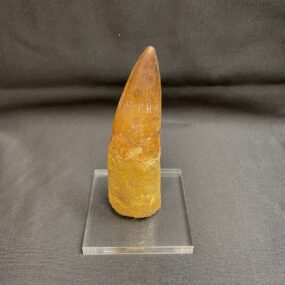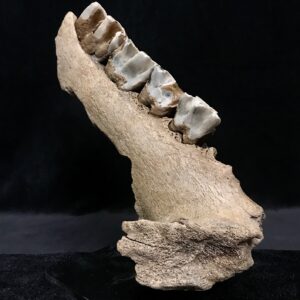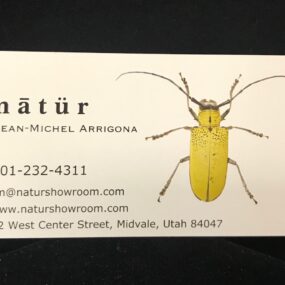Description
KT (Cretaceous-Tertiary) Boundary Soil sample / Dinosaur extinction layer with artwork in a riker mount.
Also known as the KP (Cretaceous-Paleogene) Boundary.
The KT extinction event, which occurred about 66 million years ago, was a mass extinction of potentially 75% of the plant and animal species on Earth. This extinction ranks third in severity of the major extinction episodes that we know of. There have been many hypotheses as to what caused the extinction of so much life on earth, but a lot of attention is given to the “Asteroid theory” which proposes that a large meteorite impacted the earth near what is now known as the Yucatan Peninsula, and sent huge amounts of debris into the atmosphere, leaving the earth in darkness for a fair amount of time. There is evidence that supports this theory, and this sample of soil is one part of this evidence. In the geologic record, the K–Pg event is marked by a thin layer of sediment called the K-Pg boundary, which can be found throughout the world in marine and terrestrial rocks. The boundary clay shows unusually high levels of the metal iridium, which is more common in asteroids than in the earth’s crust.
In essence, the soil at the bottom of the vial represents life before the extinction event, the dark line in the middle represents the extinction event itself (where higher than normal levels of iridium are found), and the soil at the top of the vial represents life after the KT/KP extinction event.

























